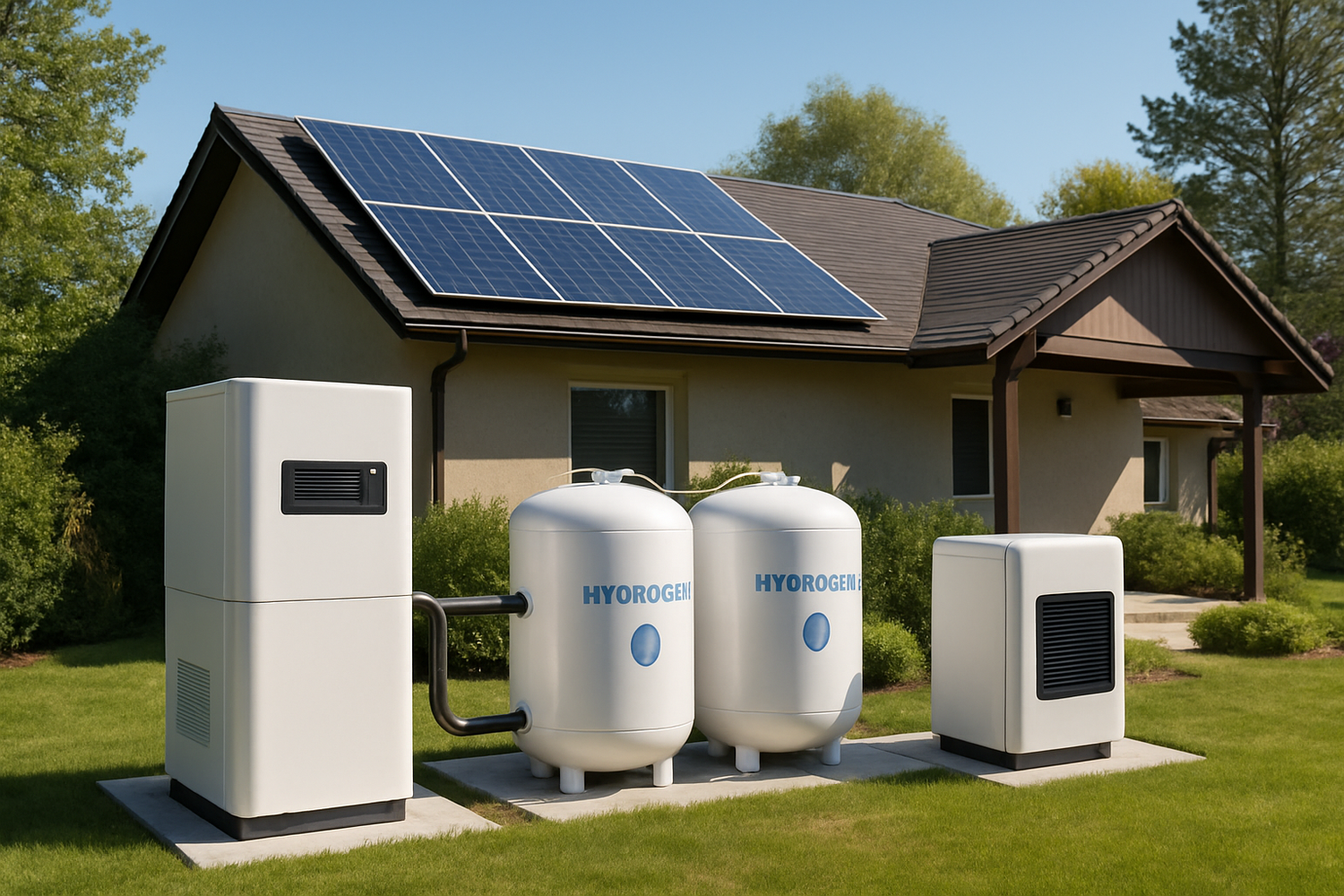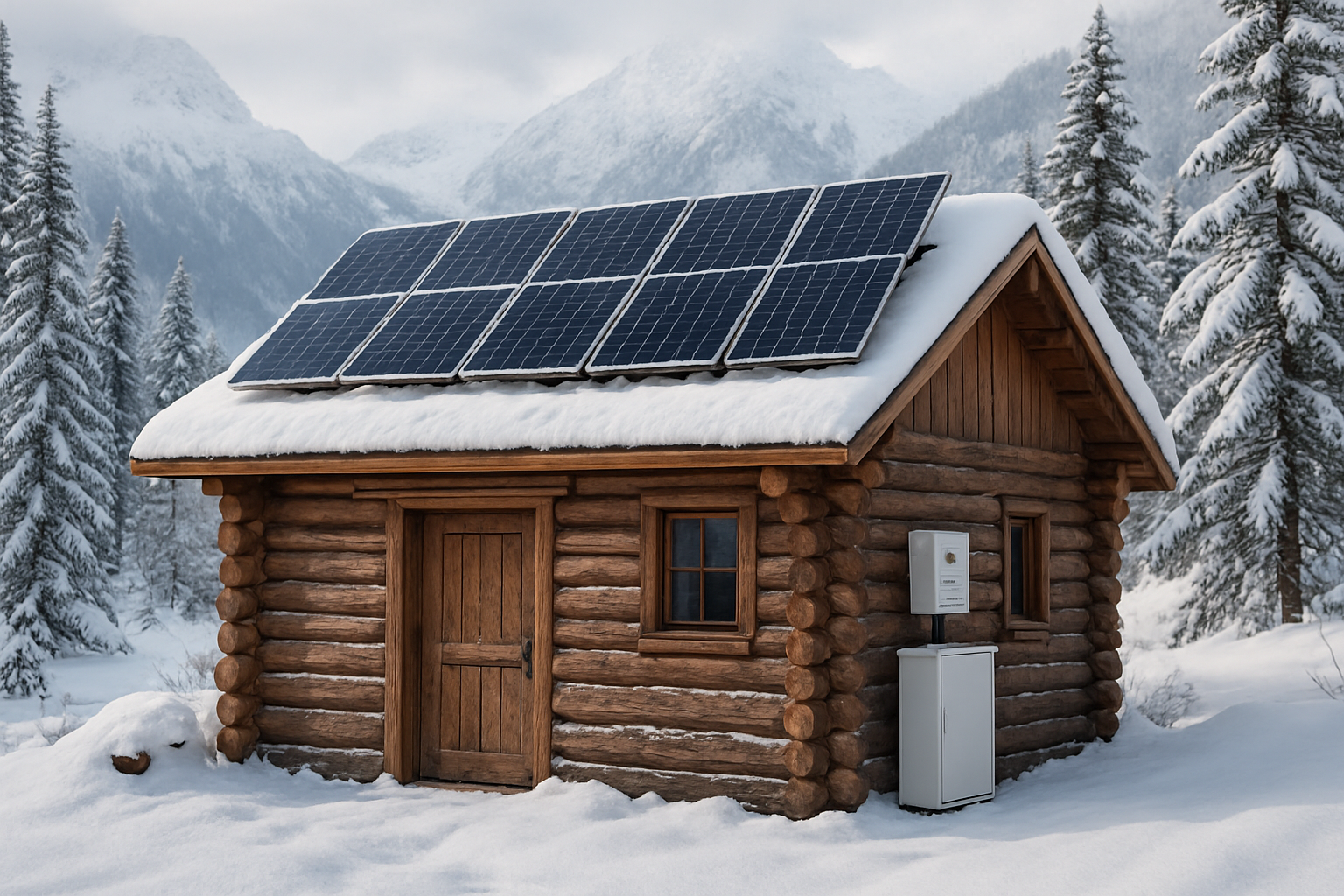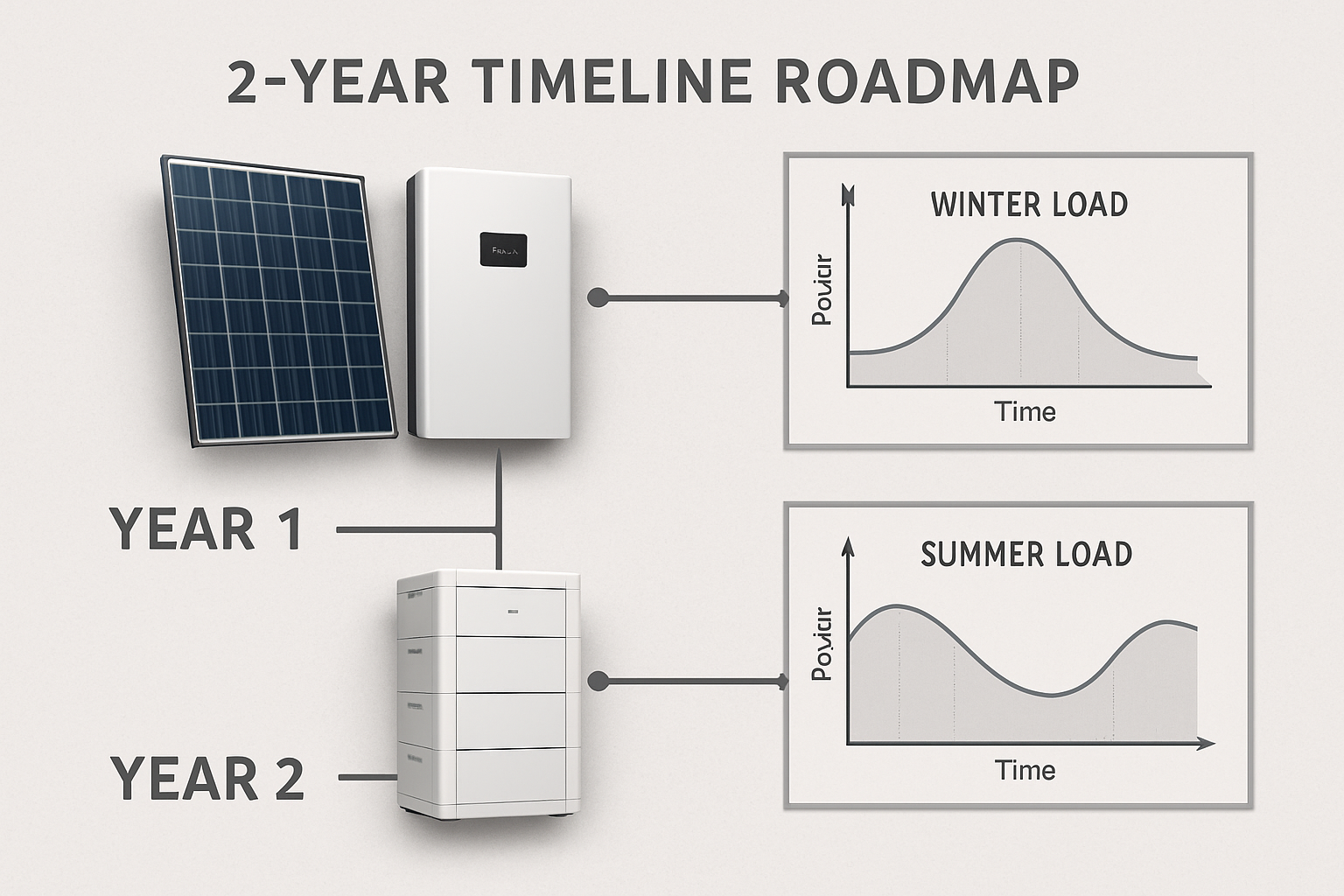Off-grid systems face their greatest challenge during seasonal energy gaps when solar production plummets and wind resources diminish. While battery storage handles daily fluctuations effectively, extended periods of low renewable generation expose a critical weakness in conventional energy storage approaches. This analysis examines whether hydrogen technology offers a viable solution for bridging these seasonal gaps and achieving true energy independence.
Understanding Seasonal Energy Gaps in Off-Grid Systems
Seasonal energy gaps represent extended periods where renewable energy production falls significantly below consumption needs. These gaps typically occur during winter months at higher latitudes, where solar irradiance drops by 60-80% compared to summer peaks, and during prolonged rainy seasons in tropical regions.
According to Getting Wind and Solar onto the Grid, bridging occasional multi-day or week shortfalls of supply stretches beyond the capabilities of demand response or conventional electricity storage. The report emphasizes that "if VRE is to dominate a power system, it is likely to be necessary to convert electricity into a chemical form that can be stored cost-effectively at scale."
Traditional lithium battery systems excel at daily cycling but face economic and technical limitations for seasonal storage. A typical off-grid home requiring 30 kWh daily would need approximately 900 kWh of battery capacity to bridge a 30-day low-production period, representing a capital investment exceeding $400,000 for LiFePO4 systems alone.
Critical Factors Driving Seasonal Gaps
- Solar angle variations: Winter sun angles reduce PV output by 40-70% at latitudes above 40°
- Weather pattern changes: Extended cloudy periods can reduce solar generation for weeks
- Increased heating loads: Winter electricity demand often doubles or triples in cold climates
- Snow coverage: Accumulated snow can eliminate solar production entirely
Hydrogen as Long-Term Energy Storage
Hydrogen emerges as a compelling solution for seasonal energy storage due to its unique characteristics. Unlike batteries that store electrical energy directly, hydrogen systems convert excess renewable electricity into chemical energy through electrolysis, storing it indefinitely without degradation.

The Green Hydrogen Cost Reduction report identifies hydrogen as "suitable for long-term, seasonal energy storage, complementing pumped-storage hydropower plants." This positioning makes hydrogen particularly valuable for off-grid applications where pumped hydro isn't feasible.
Technical Advantages of Hydrogen Storage
Hydrogen storage offers several technical benefits for seasonal applications:
- Unlimited duration: Hydrogen can be stored for months without energy loss
- High energy density: Compressed hydrogen provides 33.3 kWh per kilogram
- Scalable capacity: Storage tanks can be sized independently of power output
- Temperature independence: Performance remains stable across wide temperature ranges
A hydrogen system sized for seasonal storage typically includes an electrolyzer rated at 10-20% of peak solar capacity, allowing gradual hydrogen production during surplus generation periods. Storage vessels can hold enough hydrogen to provide weeks of backup power through fuel cell conversion.
Economic Analysis: Hydrogen vs Battery Expansion
The economic case for hydrogen storage becomes compelling when comparing costs for extended autonomy periods. Current market data shows electrolyzer costs ranging from $800-1,200/kW, while hydrogen storage costs approximately $2-4/kWh for compressed gas systems.
| Storage Duration | LiFePO4 Battery Cost | Hydrogen System Cost | Cost Advantage |
|---|---|---|---|
| 7 days (210 kWh) | $84,000 | $95,000 | Battery |
| 14 days (420 kWh) | $168,000 | $110,000 | Hydrogen |
| 30 days (900 kWh) | $360,000 | $135,000 | Hydrogen |
| 60 days (1,800 kWh) | $720,000 | $175,000 | Hydrogen |
The crossover point occurs around 10-14 days of storage capacity, beyond which hydrogen systems demonstrate clear economic advantages. However, these calculations assume current technology costs, which continue declining rapidly.
Efficiency Considerations
Hydrogen storage operates at lower round-trip efficiency compared to batteries, typically achieving 35-45% compared to 90-95% for lithium systems. However, this efficiency penalty becomes less significant for seasonal applications where the alternative is curtailing excess summer production or expanding battery capacity by 500-1000%.
Research from IRENA's hydrogen cost analysis indicates that learning rates for electrolyzers and fuel cells mirror those of solar PV, with potential learning rates reaching 16-21%. This suggests continued cost reductions will improve hydrogen economics for off-grid applications.
Implementation Strategies for Off-Grid Hydrogen
Successful hydrogen integration requires careful system design considering production, storage, and conversion components. The optimal approach varies based on load patterns, renewable resource availability, and autonomy requirements.
Hybrid Storage Architecture
Most effective off-grid hydrogen systems employ hybrid storage combining batteries for daily cycling with hydrogen for seasonal backup. This approach optimizes each technology's strengths:
- Battery subsystem: Handles daily load variations and short-term weather events
- Hydrogen subsystem: Provides extended backup during seasonal low-production periods
- Smart energy management: Coordinates between storage systems based on state-of-charge and weather forecasts
A typical residential system might include 20-40 kWh of battery storage for daily operations, paired with hydrogen storage sized for 2-4 weeks of backup power. The electrolyzer operates during peak solar production periods, gradually building hydrogen reserves during high-generation months.
System Sizing Methodology
Proper sizing requires analyzing multi-year weather data to identify worst-case scenarios. Key parameters include:
- Historical weather analysis: Identify longest low-production periods over 10+ years
- Load profiling: Account for seasonal heating/cooling variations
- Production modeling: Calculate surplus energy available for hydrogen production
- Safety margins: Include 20-30% capacity buffer for unexpected events
Challenges and Limitations
Despite its potential, hydrogen storage faces several challenges that limit widespread adoption in off-grid applications. Understanding these limitations helps determine when hydrogen makes sense versus alternative approaches.
Technical Challenges
Current hydrogen technology presents several technical hurdles:
- System complexity: Hydrogen systems require more components and maintenance than batteries
- Safety considerations: Hydrogen handling requires specialized training and safety protocols
- Efficiency losses: Multiple conversion steps reduce overall system efficiency
- Minimum load requirements: Fuel cells often have minimum operating thresholds
Economic Barriers
High upfront costs and limited economies of scale currently restrict hydrogen adoption. Small-scale electrolyzers cost significantly more per kW than utility-scale units, while maintenance requirements add ongoing expenses.
However, World Energy Investment 2023 data shows rapid growth in battery storage investment, with spending exceeding $20 billion in 2022. This investment surge suggests similar cost reductions may benefit hydrogen technology as deployment scales increase.
Future Outlook and Recommendations
The viability of hydrogen for off-grid seasonal storage depends on specific circumstances and future technology developments. Current evidence suggests hydrogen becomes economically attractive for systems requiring more than two weeks of backup storage capacity.
When Hydrogen Makes Sense
Consider hydrogen storage for off-grid systems with:
- Extended autonomy requirements: Systems needing 3+ weeks of backup power
- Severe seasonal variations: Locations with 70%+ seasonal production differences
- High-value applications: Critical loads where outages carry significant costs
- Abundant summer surplus: Systems with substantial excess renewable generation
Alternative Approaches
For many off-grid applications, alternatives may prove more practical:
- Generator backup: Diesel or propane generators for occasional use during gaps
- Load management: Reducing consumption during low-production periods
- Renewable diversification: Combining solar, wind, and micro-hydro resources
- Grid-tie options: Seasonal grid connection where infrastructure permits
The optimal solution balances capital costs, operational complexity, and reliability requirements. As hydrogen technology matures and costs decline, it will likely become viable for broader off-grid applications, particularly in regions with significant seasonal renewable energy variations.
Current trends in renewable energy investment and storage technology development suggest hydrogen will play an increasingly important role in achieving complete energy independence. However, careful analysis of site-specific conditions and requirements remains essential for determining whether hydrogen storage justifies its current premium over conventional alternatives.





Leave a comment
All comments are moderated before being published.
This site is protected by hCaptcha and the hCaptcha Privacy Policy and Terms of Service apply.